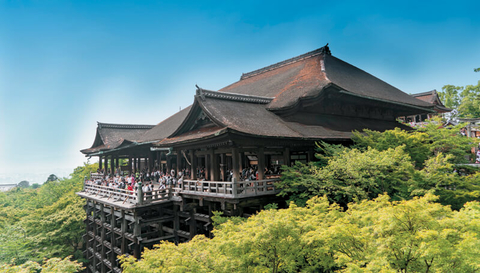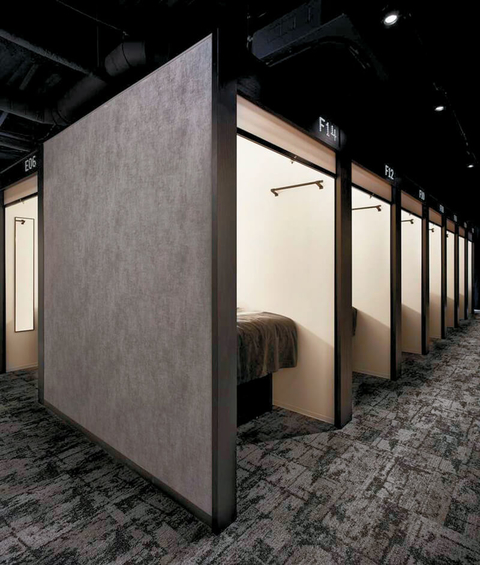While Tokyo is known for its bright lights and modernization, Kyoto is a more traditional Japanese city. It is perhaps best known for its hundreds of temples, shrines and gardens, which are surrounded by traditional Japanese accommodations and restaurants. Kyoto is in the Kansai region of Japan, about two-and-a-half hours by bullet train from Tokyo and near the Osaka airport (Kansai International).
There is ample public transportation, as well as bike rentals, available. Many temple visits double as hikes up mountains. Since Kyoto is fairly spread out, make sure clients know how they plan to get around the city.
Neighborhoods to Visit
Southern Higashiyama: This district sits at the base of the Higashiyama, or Eastern Mountains. At its northern end is Gion, famous for its traditional geishas. Those spending time in the area might spot a geisha in traditional dress and makeup. There are lots of places to see geisha shows, and there’s even a place where you can be dressed up like a geisha. Maica offers guests the chance to dress up like a geisha or samurai, complete with kimono, wig and makeup.
Higashiyama is also home to Kennin-ji Temple, the oldest Zen garden in Kyoto. Built in 1202, the temple allows guests to walk through the garden and check out the two dragons painted on the roof. Also worth checking out are Ninen-zaka and Sannen-zaka, streets that have been preserved from old Japan. The pedestrian-only thoroughfares are lined with traditional shops, restaurants and teahouses.
Kiyomizu-dera Temple, one of the most popular attractions in Kyoto, affords views of the entire city and has multiple well-preserved buildings to check out. It was built more than 12 centuries ago and is one of the 14 UNESCO World Heritage Sites in Kyoto. The temple is also a great place to go during cherry blossom season, usually from late March and early April.
Arashiyama: About a half-hour outside the center of the city, Arashiyama is worth the trip for its famous Bamboo Grove. Visitors walk through a long path surrounded by tall bamboo looming on both sides. The grove is also next to the Tenryu-ji Temple, which was originally built in 1339, but fires and wars destroyed many of the original buildings. Structures that are there now were built between the late 19th and early 20th century. The gardens, however, did survive and are the original ones. Tenryu-ji Temple is a UNESCO World Heritage Site.

The Kiyomizu-dera Temple, built more than 12 centuries ago, is one of the most popular attractions in Kyoto.
Also in Arashiyama is the monkey park. It is a short hike uphill and opens onto an area where a hundred monkeys live. It also affords views of the city.
Downtown Kyoto: While there aren’t many historical sites downtown, there are lots of restaurants and shops, including the Nishiki Market. The city’s largest traditional food market, it houses vegetable, tea, fish and meat stands, as well as a few restaurants and take-away stalls.
Also downtown is the Kyoto International Manga Museum. Housed in a former school building, it has a collection of more than 300,000 manga (Japanese comic books). If your clients are there on a weekend, it might be worth mentioning to them that workshops are held at the museum, which could be a fun rainy day option.
On the outskirts of downtown Kyoto is the Nijo Castle. Built as a residence for the shogun in 1603, the building is surrounded by gardens and a moat and divided into five buildings. Since it’s one of the more popular destinations in Kyoto, make sure clients know they should get there early to beat the crowds.
Accommodations
Four Seasons Hotel Kyoto: While the Four Seasons Hotel Kyoto is new (opened just last fall), Kyoto’s signature traditional elements are still felt throughout the hotel. In the center of the property is the 800-year-old pond garden, which many guestrooms overlook. In the garden, across a glass bridge is the traditional tearoom, and guests can take part in a centuries-old tea ceremony. Traditional aesthetics follow guests into their rooms with washi-paper lamps, fusuma screens and urushi lacquerware. Of course, guests will not lack for modern amenities such as Wi-Fi, sauna, indoor pool and a spa.
The Millennials Kyoto: The Millennials knows its demographic so well - it’s named after them. Suitable for younger clients who would rather spend more time exploring the city than in the hotel, The Millennials is a smart-pod hotel. A popular type of accommodation in Japan, rooms are just large enough for a bed and just tall enough to stand in. Some pods are even smaller and only offer enough room for guests to sit or lie down. The Millennials, however, does have beds (with Serta mattresses) as well as essential modern conveniences.
The smart-pods can be operated by the iPod given to guests at the beginning of their stay. The iPod is used as the room’s key and controls the light, fan and noiseless alarm, which wakes guests up by inclining the bed and slowly turning on the lights. Pods come with an amenity kit that includes a robe, towels, toothbrush and hairbrush. High-speed Wi-Fi is also provided and can be used in the hotel’s public spaces.

The Millennials is a smart-pod hotel, a popular type of accommodation in Japan where rooms are just large enough for a bed.
Tawaraya: For those who want more traditional accommodations, a ryokan, or Japanese inn, is worth checking out. Tawaraya, a 300-year-old ryokan, is considered one of the best and most authentic in Japan for its hospitality alone. As per tradition, there is very little furniture in the room and floors are made of tatami (rice straw mats), but every room has its own Zen garden and bathrooms have their own hot tub with garden views. Rates often include authentic meals delivered right to guest’s rooms. Here, guests dine in traditional fashion, sitting on the floor and take part in Kaiseki - a multi-course meal that can last for hours.
Where and What to Eat
Premium Pound Sanjo-Kiyamachi: Kyoto has plenty of restaurants, from street food to fine dining. One of the most popular meals is the legendary Kobe beef. A highly rated option is Premium Pound Sanjo-Kiyamachi. The restaurant serves multiple course meals around its aged beef.
Shojin Ryori: This traditional Buddhist vegetarian cuisine is often served in the temples (Tenryu-ji Temple has a restaurant). There are also many independent eateries to check out.
Hyotei: Haute cuisine, or kaiseki, is also a popular dining option in Kyoto. It often refers to a multi-course meal that combines different tastes, textures and colors. There can be more than a dozen courses, including a small appetizer, seasonal sashimi, soup, grilled fish and more. Hyotei is a three-Michelin star restaurant at Nanzenji Temple that serves the traditional Japanese meal.
Related Stories
Hawaiian Airlines, Japan Airlines Announce New Code Share Agreement
Top Tours That Let You Live Like a Local